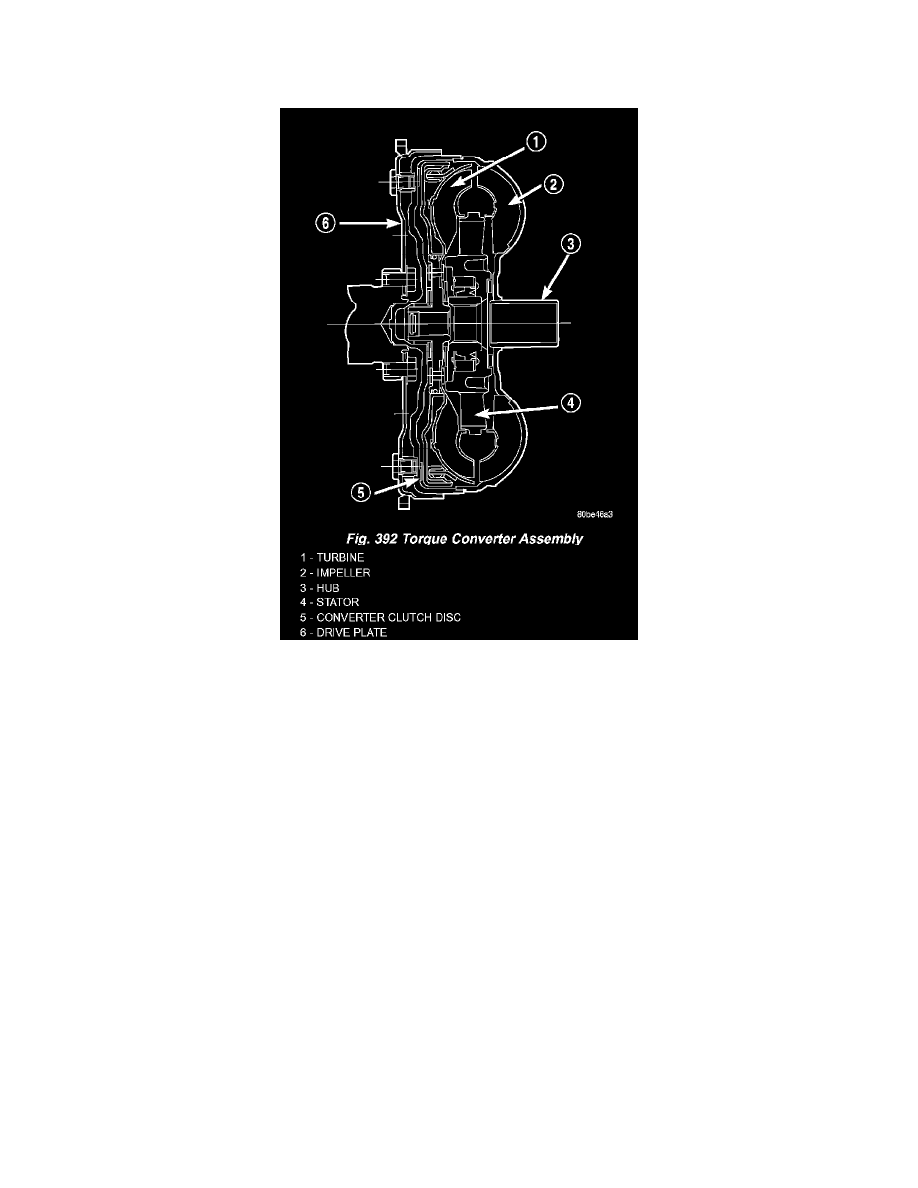Intrepid V6-2.7L VIN R (2003)

Torque Converter: Description and Operation
42LE - Automatic Transmission
TORQUE CONVERTER
DESCRIPTION
The torque converter is located in the bellhousing area of the transaxle, between the engine and transaxle. The torque converter is a fluid coupling that
transmits torque from the engine drive plate to the input shaft of the transaxle. The torque converter consists of four main components (Fig. 392):
-
Impeller
-
Turbine
-
Stator
-
Converter Clutch assembly
OPERATION
The converter impeller (driving member), which is integral to the converter housing and bolted to the engine drive plate, rotates at engine speed. The
converter turbine (driven member), which reacts from fluid pressure generated by the impeller, rotates and turns the transmission input shaft.
Torque is transmitted by fluid passing through curved vanes in both the impeller and turbine. Since the coupling is produced by transmission fluid, the
turbine can slip or turn slower than the impeller.
The stator contains a one-way overrunning clutch, which free-wheels when the impeller and turbine are rotating at the same speed. However, the stator
stops when speed reduction or torque increase take place. When the stator stops, it changes the direction of the fluid leaving the turbine vanes. This
directs fluid back into the impeller with greater force, resulting in torque multiplication.
The torque converter clutch is hydraulically operated and controlled by the TCM. It consists of a piston and a frictional disc that form a direct
mechanical link between the impeller and turbine when slippage is inefficient or unnecessary.
The torque converter hub drives the transmission oil pump.
